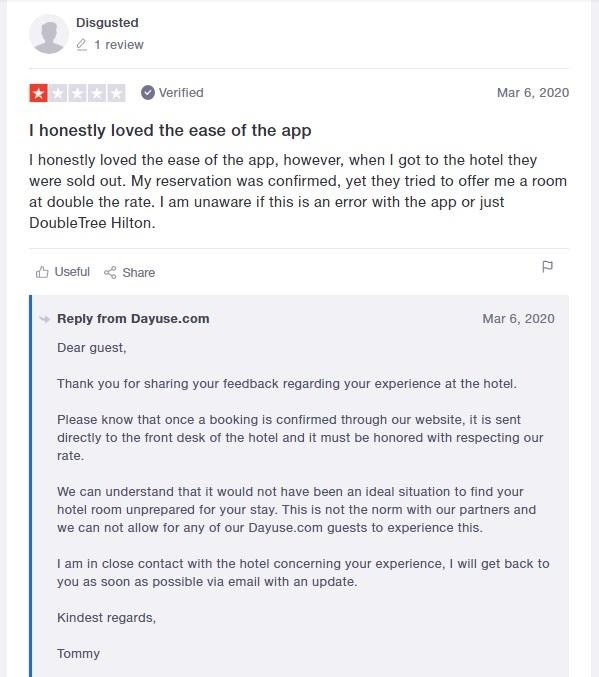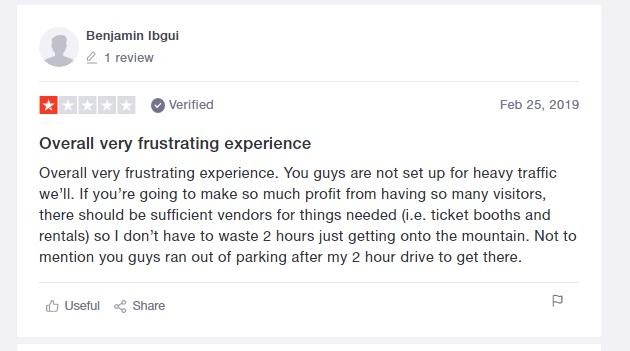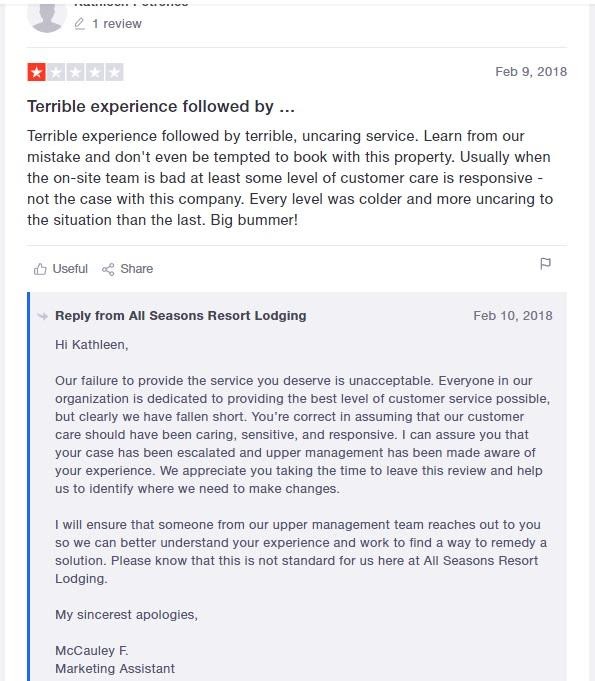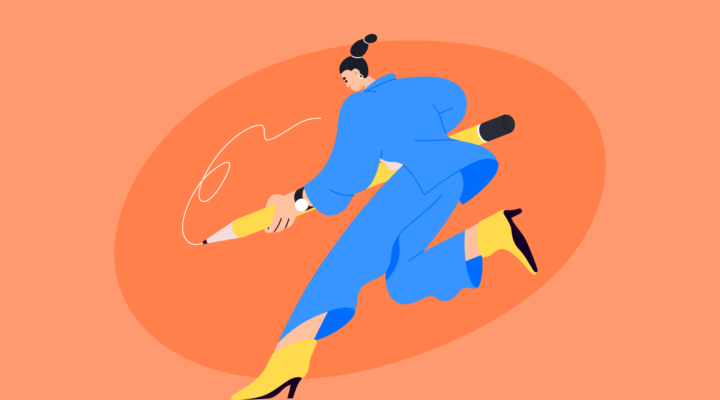Why Respond to Negative Reviews
People leave reviews to help others have a greater experience and find the best options on the market. Reviews might have a strong influence over your company’s image, both positive and negative.
Should you respond to negative feedback? What if it’s a fake comment or customer’s fault? According to a study, the reason for negative feedback in most cases is poor service:
- 60% of respondents indicated that they would write about deception.
- 59% will write if they are unsatisfied with the service.
- For 57%, the reason for a comment will be the rudeness of the staff.
- 45% will post a negative review if the product itself is bad.
Be sure to respond to negative Google reviews and feedback on other sites, instead of deleting it. On the one hand, you will demonstrate attention to your customers’ problems. On the other hand, negative feedback strengthens the credibility of positive posts because the client understands that the company is “alive”, and the review page is not filled with fake positive comments.
The number of reviews affects the position of the company on advisory services. Scientists from the United States studied thousands of reviews on Expedia and TripAdvisor and concluded: the more often companies respond to users, the more reviews they receive. Moreover, by leaving response comments, companies see their rating increase by 0.12 points on average.
How to distinguish real reviews from fake ones
First, make sure you are responding to real customers and not some marketing ploy. You can easily distinguish a real review from a fake one, intended just to ruin your business reputation. Here is how fake reviews usually look like:
- The review is posted anonymously or information about the author is poor.
- Reviews are posted with a short break, at the same time or in waves.
- If there is not a single mistake or misprint in the feedback, and you are ready to place it in a language textbook, then it is most likely paid-for.
- Check the uniqueness of the review through anti-plagiarism service as malicious commentators write several negative reviews per day, and you will probably see similar comments on different sites.
Should you respond to such reviews? Yes, but show that you want to get to the bottom of the situation and ask for specific data. If the review is fake, its author is unlikely to provide plausible details. In such cases, just contact the site administrator with a request to delete the fake review.
If you are undergoing an active information attack, issue an official press release or post with contradiction. Good, neutral, or positive reviews reduce the concentration of negative responses.
Steps to Responding to a Negative Review
So how should you respond to negative feedback to retain customers? The main thing is to act promptly and competently. Below, we’ll share the best practices to turn dissatisfied clients into your most loyal audience and build a positive image of the company.
1. Respond Swiftly
Whenever you receive a negative comment, try to respond to it as quickly as possible. You might be able to resolve customer’s problems right on the spot, making them loyal to you in the future, as well as figure out and correct service flaws.
If a client gets their problems solved, or at least are heard right after the problem occurred, they’re more likely to remember your fast reaction and support rather than the oversight. And, nothing helps a company build trust better than direct communication with customers.
2. Respond to Facts, Not Emotions
Clients might share their negative experience online just to let their dissatisfaction out and find support from the community. No matter what the client says and how offensive their words are, show your understanding and then respond to the facts. Otherwise, you will look silly and might lose the reputation of a serious brand.
3. Express Your Gratitude
Show your appreciation of the client taking time to bring the problem to your attention. That is, start your response with something like: “Thank you for your review,” “Thanks for the information,” etc. Thus, you’ll build the image of a company that is constantly improving its services.
4. Apologize
Negative feedback usually comes from poor service rather than hypercritical clients. Try to empathize with your customers in any case. Even if they made the order incorrectly or did not take into account external circumstances, it doesn’t matter. Therefore, include an apology. Depending on the context, anything from a short “We apologize,” to “Kindly accept our apologies that you felt offended,” or “we are very upset that you are upset.” In this case, courtesy is the key.
However, apologizing doesn’t mean you need to admit the fault you haven’t committed. You can be just sorry for a poor experience a customer had, and express it to help them feel better. Such politeness is a great step towards successful communication.
5. Take Responsibility
Accept the responsibility for the client’s experience with your company. Thus, you will earn the respect of your customers and improve your business reputation.
Taking responsibility usually means taking actions. Try to determine the cause of the problem and suggest the most effective solution:
- If the customer received defective goods, offer a replacement.
- If there was a failure when placing an order, offer a discount code as compensation.
- If customers are not satisfied with the product or service according to objective characteristics, offer to return the money.
If there is no clear plan yet, let the customer know that you are looking for a way to improve the situation. If the client spent time writing a negative review, then something really went wrong, and you need to show that you care.
6. Provide Compensation
You can always smooth over the dissatisfaction by offering a bonus or compensation. If the hotel guest was not satisfied with the provided services, for instance, the cleanliness of the room, then you can offer them a discount on a room of the same category or another room of a higher category for their next stay.
Another example is if a customer waited too long for their order in a restaurant and hastened to write about it. As compensation, you can offer a free dish from the category that he had to wait for or an equivalent discount.
7. Offer to Discuss the Issue Offline
It will save your company’s image if you take the dialogue from the public field to personal communication by mail, phone, etc. For example, “Good afternoon, [username]. We wrote to you personally to solve the problem.” First, it will show how much you value the client because you are ready to spend as much of your time as it takes to solve their problem. Second, by moving the conversation into a private channel, you can avoid a possible escalation of the conflict and further outburst of anger on the internet.
At the same time, be sure to write on the site where the review initially appeared about how you resolved the problem. This is important for other users to see that you can work out negative situations and you care about your customers’ opinions.
8. Invite the User to Come Back
Posting a negative review doesn’t mean the client won’t ever come to you. In fact, it’s the opposite. They are showing you that they are open for communication, and it’s up to you to settle things amicably. Thus, feel free to invite the client to come back and see changes when responding to negative feedback.
This will show an even greater desire to provide your client with perfect service on your part. Should they come again, this can be a great opportunity to turn the client into your influencers, who, after a second visit, can update the review.
What should you write? For instance:
- “I understand that this moment has spoiled your impression, but I hope that it will not affect your future trips with our company.”
- “We really hope that you will return to us, and we, in turn, will do everything to make your vacation go well!”
What if It Is a Star Rating?
Another type of feedback is a star rating without text. This creates additional difficulties if there is a poor rating and no explanation, which can spoil the impression.
In such cases, you should respond to a negative review, as well, and ask the commentator to share their experience privately. Your comment should be brief and tepid:
- “Your feedback is very important for us. Please contact us by calling [phone number] to speak about your recent experience.”
- “We invite you to contact us at [email address] so that we can discuss your specific personal experience in [company name]. Thank you.”
Always try to ask direct questions if someone left negative feedback, but didn’t elaborate. Even if they don’t answer you, the following readers will see that you tried to get to the bottom of the matter and are ready to take responsibility.
Response Examples
Now, let’s look at specific negative review response examples feedback, how you should or should not work with such comments.
Travel Agency Review

The letter above is a good example of a response to negative feedback. There is gratitude for the appeal, attention to the customer’s feelings, recognition of the company’s responsibility, and actions to solve the problem (finding out exactly what happened in the hotel and a promise to notify the guest of further actions). The only drawback is lack of specificity in the signature, namely the position of the employee.
Airline Review

And here is a response to a star rating. The company expresses gratitude for reaching out and regret for the negative experience the client had. They also promise to contact the client in person to find out the reasons for such feedback and resolve the situation.
Sightseeing Tour Agency Review

This type of review is common on the internet. It really has nothing to do with the company’s activities, but is caused by the subjective customer’s perception and external reasons. However, the company adheres to a polite response and sympathy for what overshadowed the client’s rest. It could be even better, if they addressed the client by name, which is known, and added a signature or a contact person.
Ski Resort Review

This is an example of a negative review left without response. To an outsider, it looks that the company doesn’t care about the image or customer’s bad experience.
An appropriate response to this review could be:
“Dear Benjamin Ibgui!
We are very sorry that the long waiting and lack of parking spoiled the impressions of the rest of your experience. We understand your feelings and thank you for finding the opportunity to share your experience with us.
We are currently working to eliminate these negative aspects and absolutely agree with you that the number of employees needs to be increased. We also sent your wishes for parking improvements to senior management.
We hope that you will be satisfied with our innovations and enjoy skiing on your next visit.
Sincerely yours [company representative name]!”
Accommodation Review

It is, again, an almost exemplary response to a negative review, with the fact that they appropriately address the customer by name and include the signature of the company representative. It includes sympathy, an apology, and acknowledgement that the situation wasn’t normal. The company also tries to solve the problem and take communication offline.
These are just a few positive review response examples that we’ve gathered to help you understand how to respond to negative feedback. To write a perfect one for your case, just follow our tips and write with compassion rather than staying purely formal.
Responding to Negative Feedback: Checklist
Let’s summarize what you should and shouldn’t do when working with negative reviews.
Do’s
- Apologize and thank the client for pointing out a mistake.
- Sign the response. Indicate your name and position in the signature.
- Find out the details, clarify the facts.
- Convince the customer that you will remedy the flaws.
- Solve the problem and report it to the customer.
- Offer the client compensation or a discount if applicable.
Don’ts
- Do not be rude. If you feel annoyed, take a short time out to calm down. Remember that the review does not concern you personally, but your product or service.
- Do not use stock answers, for instance, “Your call is very important to us” and the like. They only increase the level of users’ annoyance. So be personal and compassionate in your response.
- Do not delay the answer. 42% of users expect a response from the company to their review in the next hour after posting.
- Avoid the words “it.” Every time you say “it,” when referring to the problem, you are not listening well. Instead of sugar-coating, use customer definitions. “We regret that the trip was unpleasant” sounds much better than “We regret it.”
- Do not leave negative comments unanswered. Respond to feedback from a position of respect. By remaining professional during conflict, you strengthen the company’s image in the readers’ eyes.
In addition, we offer one more tip that you’ll definitely need one day: take a screenshot of your correspondence with the customer and save it. Users can delete their comments (and with it, for example on Facebook, the entire branch of correspondence will disappear) and continue to write complaints. Therefore, screenshots of the problem and solution will help you.
How to Respond to a Bad Review Online
A negative review can be a red flag indicating that your company has flaws, but it also can be a way to gain loyal audience and build trust. So, don’t be afraid of constructive feedback. Take it as a fact, because they can give you tips and opportunities to improve your business. Respond to every negative comment and try to offer customers the best solution to the problem. Be polite and consider each complaint strategically, as a chance to win over the audience as a whole.




